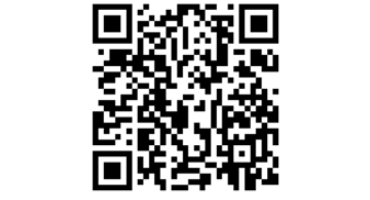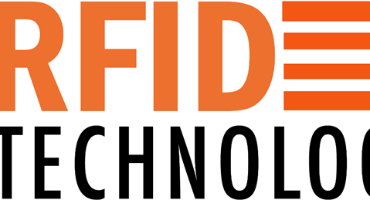QR Code barcodes are a perfect example of industrial innovation spilling into everyday life. QR Code Barcodes (Quick Response Codes) solved a very practical problem on Japan's Toyota production lines but became a digital bridge between the physical and online worlds. Their openness (no license fees, no proprietary lock-in) was key to their success — much like the World Wide Web itself. QR Code Barcodes (Quick Response Codes) barcodes have a really interesting backstory that ties into the evolution of barcoding, automotive manufacturing and global digital culture & life.
Here’s the fuller story:
Origins of QR Codes: Invented in Japan in 1994, QR Codes were developed by Masahiro Hara and his team at Denso Wave, a subsidiary of Toyota. At the time, Toyota’s production lines were using 1D barcodes (like Code 39 or UPC) to track automotive parts.
But 1D barcodes had limits - They could only store a small amount of data (typically 20–25 characters). Workers had to scan multiple barcodes per part, slowing down the line. The barcodes required precise alignment with scanners.
The Key Challenge:
Toyota wanted something that could store more information (parts numbers, descriptions, even Kanji characters). Scan faster from any angle. Be resistant to dirt and damage common in factories.
Breakthrough Design of Barcodes:
2D Matrix barcode Structure - Instead of encoding data in a single line (1D), Denso Wave used a two-dimensional matrix of black and white squares. This boosted capacity from tens of characters to thousands (up to 7,089 numeric or 4,296 alphanumeric).
Fast Scanning - The three distinctive position markers (the big squares in three corners) let scanners detect orientation instantly, making QR stand for “Quick Response”.
Error Correction - QR Codes barcode use Reed–Solomon error correction, allowing them to be read even if up to ~30% of the code is damaged, dirty, or obscured.
Expansion Beyond Automotive:
Open & Royalty-Free - Crucially, in 1999, Denso Wave declared QR Code a public standard, not enforcing patents. This open approach fueled worldwide adoption.
2000s: Mobile Era - With the rise of camera phones in Japan, QR codes became popular for marketing — linking print ads, posters, and packaging directly to websites.
Japan led adoption while Western countries lagged, since early phone cameras lacked QR scanning capabilities.
2010s: Global Uptake - As smartphones standardised QR scanners, adoption spread globally - China embraced QR via WeChat Pay & Alipay, making QR central to daily payments. Retail & Logistics adopted them for product tracking, authentication, and engagement. COVID-19 Pandemic (2020) gave QR codes another global boost, used for contactless menus, payments, and health check-ins.
QR Codes Today:
Versatility - QR Codes can now store not only URLs but also Wi-Fi credentials, payment details, app download links, or event tickets.
Variants exist too:
Micro QR (smaller)
Frame QR (with embedded images/logos)
iQR Code (rectangular or higher-density)
Beyond Retail - Used in blockchain/crypto wallets, logistics tracking, IoT devices, product authentication (anti-counterfeit), and marketing campaigns.
Cultural Icon - They’ve gone from obscure factory tool to a global visual language — now instantly recognised worldwide.
QR codes are a perfect example of industrial innovation spilling into everyday life. They solved a very practical problem on Toyota’s production lines but became a digital bridge between the physical and online worlds. Their openness (no license fees, no proprietary lock-in) was key to their success — much like the World Wide Web itself.
Barcodes are 1D barcodes using lines to store limited data, scanned from one direction, while QR codes are 2D, square matrix codes that store significantly more information (including URLs, text, and contact info) and can be scanned from any angle. The key differences lie in data capacity, complexity, and scannability, with QR codes offering higher data density, more flexibility for various data types, and error correction.
Barcodes:
Definition: A one-dimensional (1D) barcode uses a series of parallel lines and spaces to store data, which are read by a narrow light beam.
Data Capacity: They have a limited storage capacity, typically holding a few dozen characters.
Scanability: Barcodes require a clear line of sight and are usually scanned from one direction.
Common Uses: Widely used for simple product tracking, inventory management, and identifying items in retail and warehouses.
QR Codes Barcodes :
Definition: Also known as Quick Response codes, these are two-dimensional (2D) matrix barcodes that store information in a grid of black and white squares.
Data Capacity: They can store a much larger amount of data, including over 7,000 alphanumeric characters, plus binary or Kanji characters.
Scanability: QR codes can be scanned from any angle using smartphones or image-based scanners, improving speed and convenience.
Key Features:
Error Correction: They have built-in error correction, meaning they can still be read even if partially damaged or smudged.
Flexibility: Can store diverse data types, such as URLs, contact information, calendar entries, and plain text.
Common Uses: Bridging the physical and digital worlds by linking to websites, providing detailed product information, and enabling contactless payments or sharing digital content.
Key Differences Summarised:
Dimensionality: Barcodes are 1D; QR codes are 2D.
Data Capacity: QR codes hold substantially more data than barcodes.
Scanning: Barcodes need line-of-sight scanning, while QR codes scan from any angle.
Resilience: QR codes possess error correction, making them more robust to damage.



